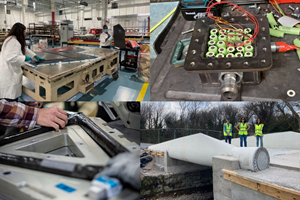Shifting paradigms
CT editor-in-chief Jeff Sloan contends that now is the time for the North American auto industry to begin rethinking how it designs and builds cars.
It’s Jan. 11 as I sit down to write this editorial. I was all set with a topic in mind for this month’s column when I heard this on the news: In 2009, more cars were sold in China than in the U.S.
The report, from China’s Xinhua news agency, says China’s auto sales exceeded 13.64 million units in 2009, up by more than 45 percent from 2008, when sales were 9.4 million units. Compare this with U.S. auto sales, which were 10.43 million units in 2009, down 21 percent from 2008. The Chinese increase was spurred, in part, by government tax credits and subsidies.
I suppose, by the time this issue is distributed in early February, that this news will be more widespread and discussed, but for now it’s fresh and a bona fide eye-opener. It’s no surprise that a country the size of China, with a population five times larger than the U.S., would eventually become the world’s biggest consumer. The Chinese government has been pushing very hard for more than a decade to become a world-class economy, and has made no secret of its desire to build a consumer class equal in size and authority to its manufacturing industry. Still, knowing that a change like this is coming, and anticipating it, doesn’t diminish its paradigm-shifting nature.
Two questions loom, the answers to which will dictate the balance of auto “power” for the next few years: Will U.S. auto sales recover to pre-recession sales levels of 16 million units, and if so, how soon? Where will Chinese auto sales top out? Granted, U.S. auto sales in 2009 likely were at a modern low, and will no doubt begin a gradual recovery in 2010. And it’s fair to question whether the Chinese government can continue to subsidize auto sales in that country. Thus, there is reason to believe that some equilibrium might return to auto sales in each country. But no matter how you slice it, the U.S. is a mature market capable, at best, of modest growth. Yet China is a long distance from mature, and could grow immensely. Chinese auto sales dominance seems both certain and imminent. Ultimately, the real question automakers worldwide must answer is how do we tackle this fast-growing Chinese market?
Set against the worst recession in more than 60 years, these tumultuous market changes and the questions they raise make it temptingly easy, if you’re in the North American segment of the auto industry, to wish and advocate for a “return” to a yesteryear in which U.S. market dominance seemed unending. What the last two years — the last decade, for that matter — have taught us, however, is that these paradigms are shifting, with or without our consent. We — that is, American automakers in general and auto composites advocates in particular — have a choice: Either innovate and adapt to new markets and new opportunities, or fight them and risk being overwhelmed and overcome by those who do.
The American automobile legacy — in production and consumption — has been unbeatable, but that’s no guarantee of future success. If the future of the North American auto industry is “over there,” then now is the time for those “over here” to begin rethinking how best to design and build cars (for one possibility, see the commentary highlighted under "Editor's Picks," at right), and how best to make sure composite materials are part of the global vehicular future.
Related Content
As 2023 begins, a look back at trending CW topics in 2022
With 2022 now behind us, CW’s editor-in-chief Jeff Sloan takes a look at the CW stories last year that received the most reader attention.
Read MoreLooking at composites through the lens of U.S. history
When you’re a tourist with a background in writing for manufacturing it’s impossible not to notice all of the ways in which composites have resulted in significant milestones in the U.S. — historically and in the present.
Read MoreThe return of trade show season
SAMPE Seattle, JEC World and the Paris Air Show are approaching fast, and they signal the real emergence of a post-pandemic world.
Read MoreA return to JEC World
CW editor-in-chief Scott Francis reflects on the ways in which the composites industry has changed and also stayed the same based on observations from this year’s JEC World.
Read MoreRead Next
Plant tour: Daher Shap’in TechCenter and composites production plant, Saint-Aignan-de-Grandlieu, France
Co-located R&D and production advance OOA thermosets, thermoplastics, welding, recycling and digital technologies for faster processing and certification of lighter, more sustainable composites.
Read More“Structured air” TPS safeguards composite structures
Powered by an 85% air/15% pure polyimide aerogel, Blueshift’s novel material system protects structures during transient thermal events from -200°C to beyond 2400°C for rockets, battery boxes and more.
Read MoreAll-recycled, needle-punched nonwoven CFRP slashes carbon footprint of Formula 2 seat
Dallara and Tenowo collaborate to produce a race-ready Formula 2 seat using recycled carbon fiber, reducing CO2 emissions by 97.5% compared to virgin materials.
Read More









.jpg;maxWidth=300;quality=90)











